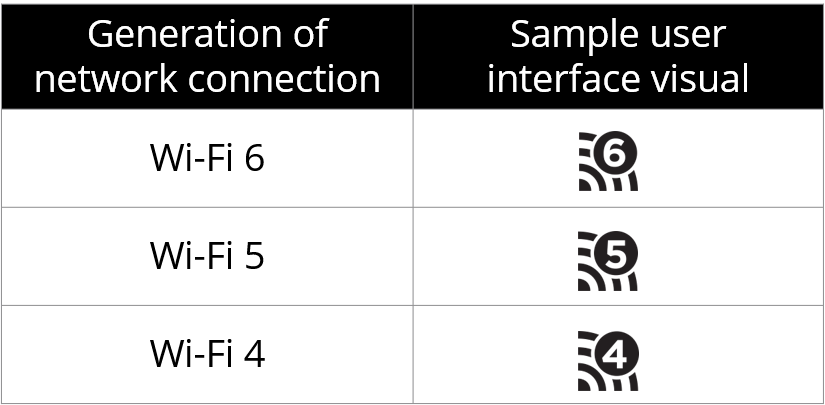Why do some say “Wi-Fi 6” and others 802.11ax ? What is “Wi-Fi 4”? We give you a quick overview of the wifi generations so far.
In 2018, the industry organization WiFi Alliance introduced new designations to be used on WiFi products to signal what they can perform.
We should point out that the standards for wifi themselves did not change names. The committee that develops the wifi standards is still called IEEE 802.11, and the standards they publish still have catchy, yet precise names like “802.11ax “.
The WiFi Alliance does not control these standards, only its own product certification programs. By introducing generational names for wifi, they wanted to give more user-friendly designations to the products that support these standards. Products that support 802.11ax are referred to as Wi-Fi 6, which is counted as the sixth generation of Wi-Fi.

Generational names and standard names are now used interchangeably, and it is therefore not wrong to say “ax” or “ac” about what a product supports, although it is becoming increasingly common to primarily refer to the generations.
The idea is also that new products should be able to show the user which version of Wi-Fi technology is available when connecting to a wireless access point. You’ll not only get a wifi signal on the task bar of your phone or PC, but also a number that indicates the maximum performance and functionality you can expect from the connection.
| Generation and technological standard | Frequency band | Note |
|---|---|---|
| Wi-Fi 7 / 802.11be | 6 GHz 5 GHz 2.4 GHz | The standard is still not finalized as of April 2024, but the Wi-Fi Alliance started its certification program for Wi-Fi 7 in January. |
| Wi-Fi 6E / 802.11ax | 6 GHz 5 GHz 2.4 GHz | Launched together with Wi-Fi 6, but reserved for products that also support Wi-Fi on the 6 GHz band. Read more here: Wi-Fi 6E: Internet at 6 GHz |
| Wi-Fi 6 / 802.11ax | 5 GHz and 2.4 GHz | The latest standard in general use today. Wi-Fi Alliance started product certification of Wi-Fi 6 in September 2019, the standard was finally approved in May 2021. Read more in Wi-Fi 6: What can we expect from 802.11ax |
| Wi-Fi 5 / 802.11ac | 5 GHz | This designation does not distinguish between the first ax products and the latest round that includes newer technologies, known as Wave 2. |
| Wi-Fi 4 / 802.11n | 5 GHz and 2.4 GHz |
Links
Wi-Fi Alliance on:
- Wi-Fi 7: https://www.wi-fi.org/discover-wi-fi/wi-fi-certified-7
- Wi-Fi 6: https://www.wi-fi.org/discover-wi-fi/wi-fi-certified-6
Article by Jorunn Danielsen